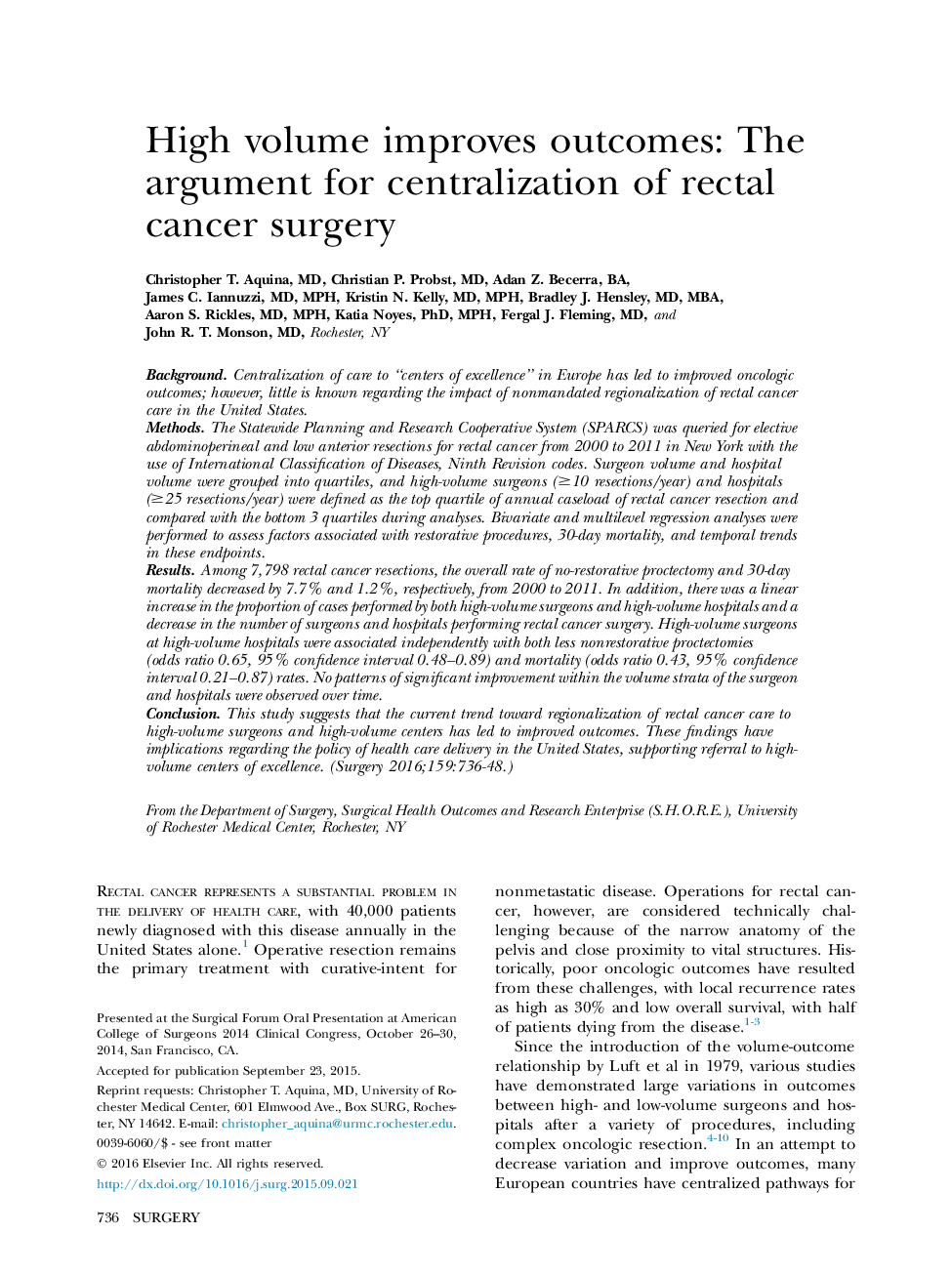| Article ID | Journal | Published Year | Pages | File Type |
|---|---|---|---|---|
| 4306804 | Surgery | 2016 | 13 Pages |
BackgroundCentralization of care to “centers of excellence” in Europe has led to improved oncologic outcomes; however, little is known regarding the impact of nonmandated regionalization of rectal cancer care in the United States.MethodsThe Statewide Planning and Research Cooperative System (SPARCS) was queried for elective abdominoperineal and low anterior resections for rectal cancer from 2000 to 2011 in New York with the use of International Classification of Diseases, Ninth Revision codes. Surgeon volume and hospital volume were grouped into quartiles, and high-volume surgeons (≥10 resections/year) and hospitals (≥25 resections/year) were defined as the top quartile of annual caseload of rectal cancer resection and compared with the bottom 3 quartiles during analyses. Bivariate and multilevel regression analyses were performed to assess factors associated with restorative procedures, 30-day mortality, and temporal trends in these endpoints.ResultsAmong 7,798 rectal cancer resections, the overall rate of no-restorative proctectomy and 30-day mortality decreased by 7.7% and 1.2%, respectively, from 2000 to 2011. In addition, there was a linear increase in the proportion of cases performed by both high-volume surgeons and high-volume hospitals and a decrease in the number of surgeons and hospitals performing rectal cancer surgery. High-volume surgeons at high-volume hospitals were associated independently with both less nonrestorative proctectomies (odds ratio 0.65, 95% confidence interval 0.48–0.89) and mortality (odds ratio 0.43, 95% confidence interval 0.21–0.87) rates. No patterns of significant improvement within the volume strata of the surgeon and hospitals were observed over time.ConclusionThis study suggests that the current trend toward regionalization of rectal cancer care to high-volume surgeons and high-volume centers has led to improved outcomes. These findings have implications regarding the policy of health care delivery in the United States, supporting referral to high-volume centers of excellence.
